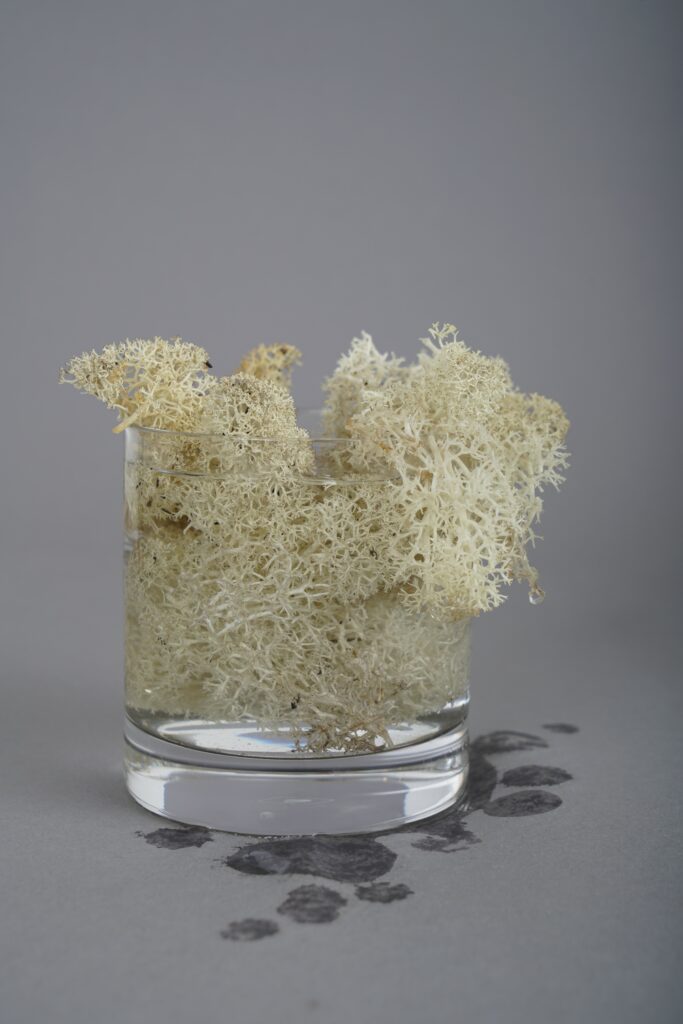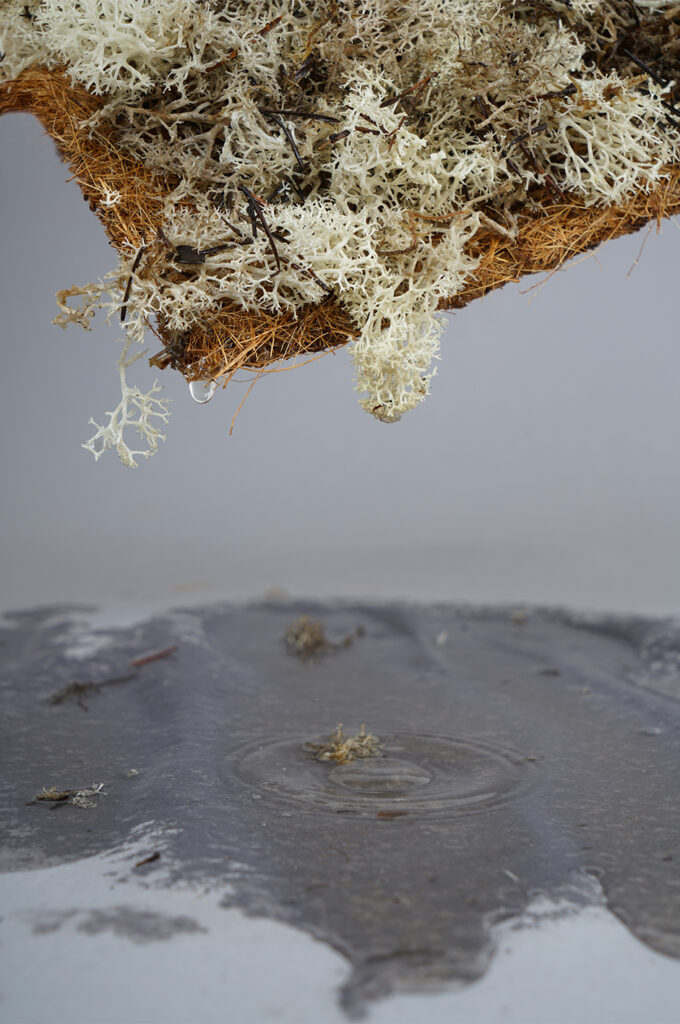GEFLECHT, WS 20/21
SCENARIO
In 20 million years, mankind will be long forgotten. Nevertheless, it has strongly influenced the development of the earth. Due to climate change and species extinction, ecological systems have become massively out of balance between the years 2100 and 2130. Extreme temperatures, progressive desertification and drying up water basins made the survival of plants and animals more and more hopeless. Finally, after practically all living creatures had disappeared from the face of the earth, despite all attempts to solve the problems that had arisen technically, the age of lichens began.
As the only organisms, they had no problem with the drastic changes, but could rather profit from them. Due to their intelligent water management and their resistance to heat and cold, they possessed the ideal prerequisites to occupy the now vacated spaces. Gradually, they colonized larger and larger parts of the earth and continuously optimized their capabilities.
Lichens are now able to regulate their water balance independently and thus not only control their growth, but also accelerate it in a targeted manner. At the same time, they have developed a kind of communication capability within their networked structures that allows them to process information and transmit it over greater distances. This makes it possible for them, despite their stationary nature, to carry out movements and actively conquer new habitats. In the course of this evolutionary strategy, they are well on their way to developing into a new form of intelligence, based on their progressive networking into comprehensive hyper-organisms. It does not seem impossible that in the future they will even give rise to their own kind of culture and society.
Although humans have long since ceased to play a role in this new earth age, they have had a significant influence on this world structure, including by beginning to cultivate lichens for their own purposes 20 million years ago.
CONCEPT
Lichens look like plants, but they are actually a symbiosis of algae and fungi. They can cope with extreme temperatures, need neither roots nor direct access to water, and are apparently able to exist completely autonomously. Their trick: they get everything they need from the air. The bearded lichen (Usnea) is particularly good at this. Its very dense braid hangs in the air, attached to just one point, and can very efficiently draw moisture out of it. This condenses on the lichen so well that often, when it is already saturated, additional water droplets form on the surface.
In times of increasing water scarcity, these properties can also be used by humans and integrated into their architecture. With lichens as part of a functional façade, a continuous water supply can also be achieved independently of an external infrastructure or precipitation. In this project, the concept is implemented in the form of modules that are planted in advance and installed on a support system. The condensed water is discharged via cutouts and pipes and collected in a tank.
The project is in the context of necessary adaptation strategies to climate change, here in the form of a supplementary installation that also changes the character of the given architecture. However, human construction and natural growth not only merge technically, but also make a symbiotic relationship with nature directly tangible. Systemic relationships develop in which the relationship and interdependence of man and nature are redefined.
In this process, the lichen is both a means and a model. As a symbiotically organized survival artist itself, it combines properties and potentials that could still play a major role for the future.





